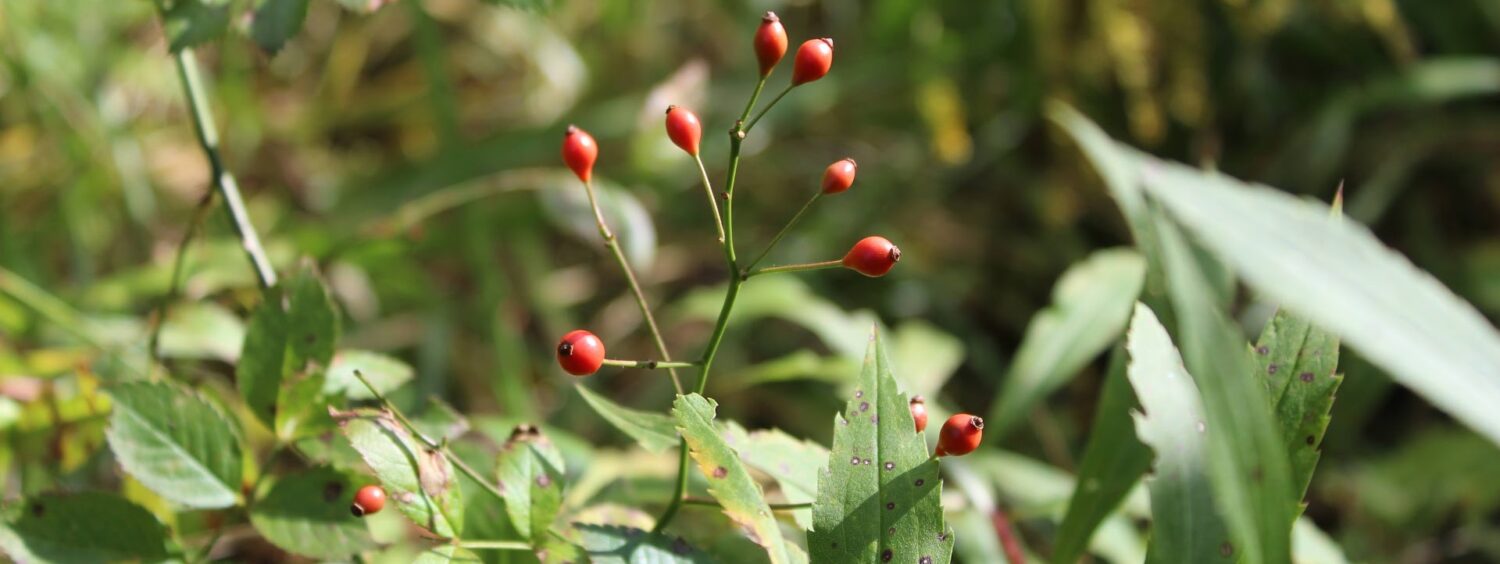In the month of April, the phenological changes that were revving up in March become abundantly clear. Buds are blooming, migratory birds continue their return, and if you have seasonal allergies, influxes of pollen can be all too apparent. Throughout the first half of April, I returned to Centennial Woods to observe the annual natural transitions that indicate spring has sprung.
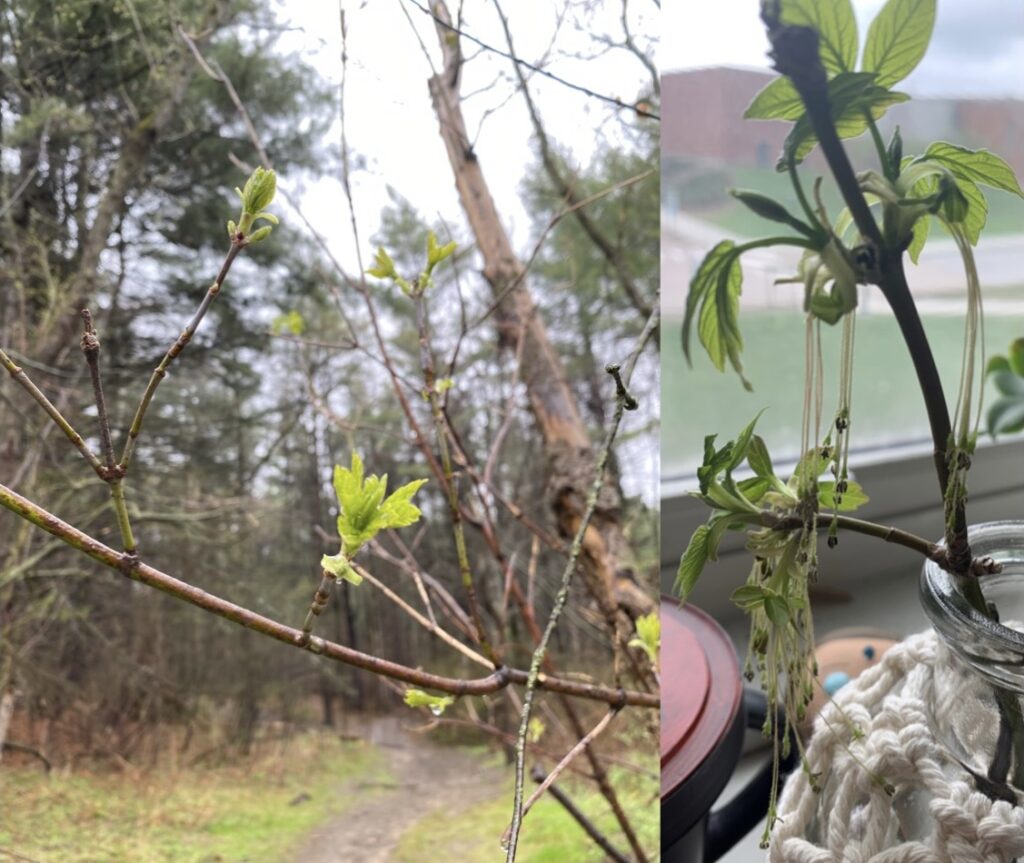
The reemerging leaves bring back vibrancy to the previously barren landscapes. Pictured above is the progression of a boxelder maple. Boxelders are dioecious, meaning that male and female flowers bloom on separate trees. The clipping shown on the right is of a male flower, indicated by the yellow-green calyx from which the hanging stamens protrude. Female flowers can be identified by their reddish-green calyxes.
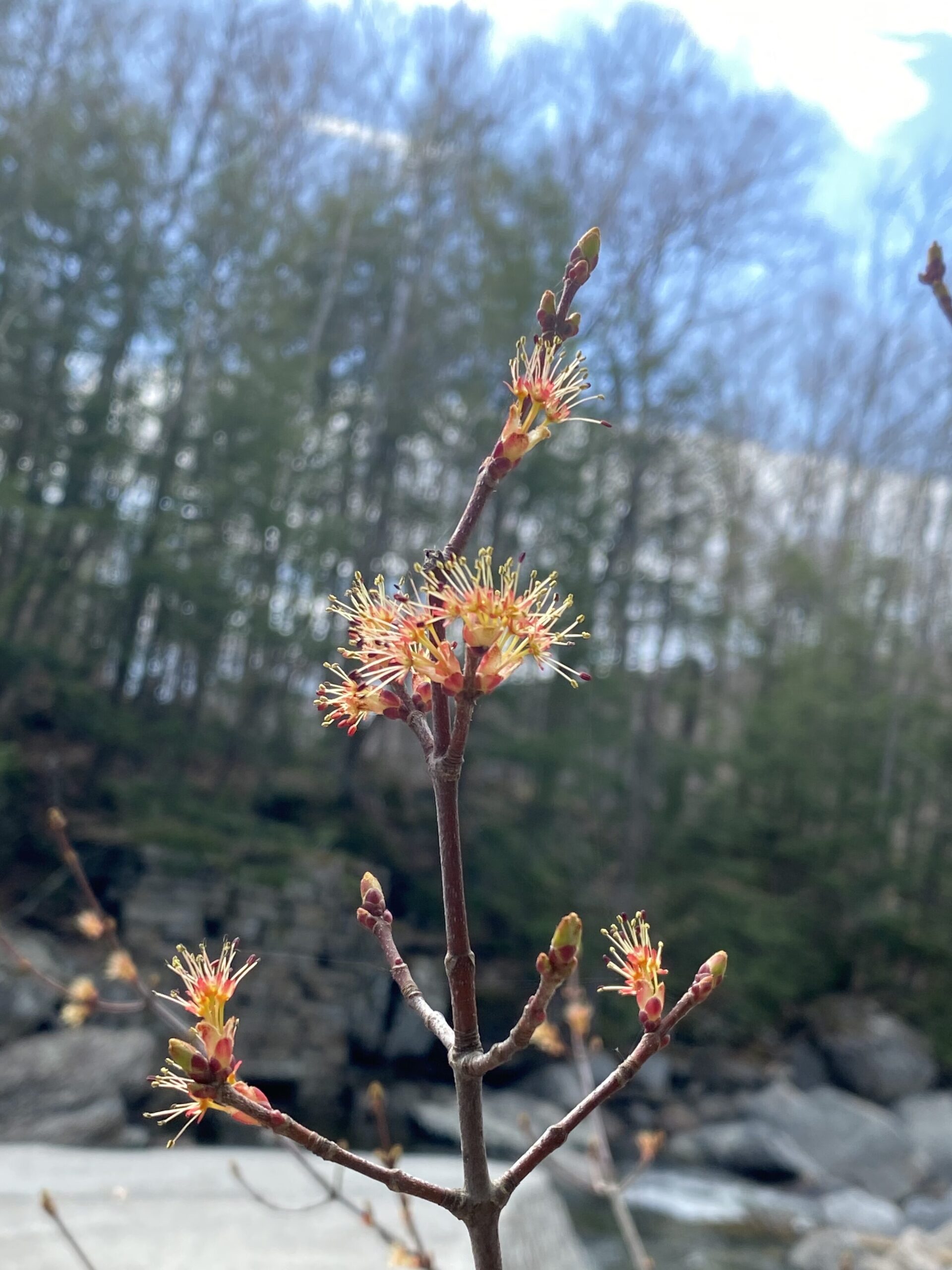
This eye-catching blossom is an emerging red maple. The pollen-covered stamens surpassing the small petals indicate that this particular cluster of blossoms are all male, however unlike the boxelder maple, red maples can yield a combination of male and female flowers on one tree.
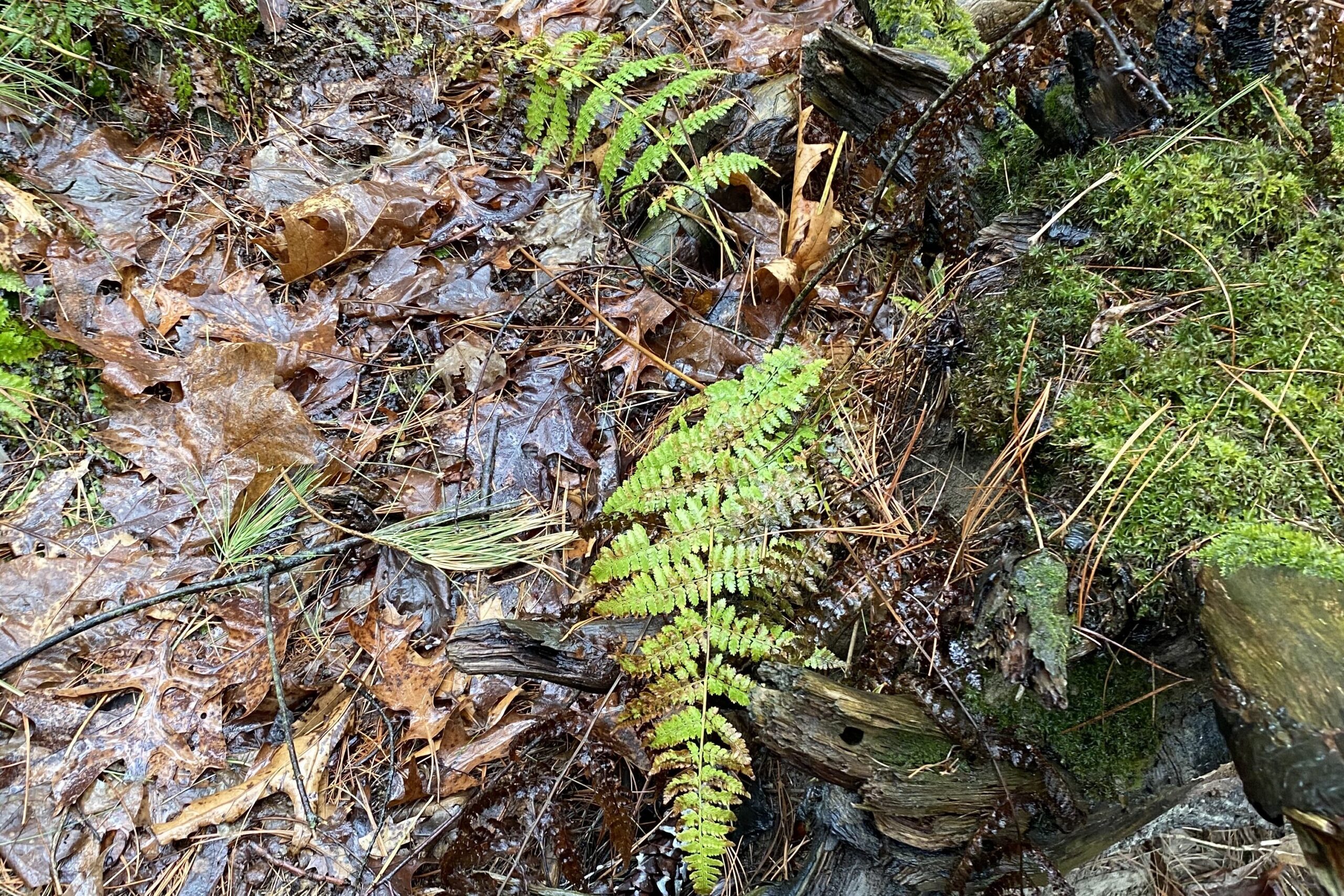
Alongside the multitude of blossoming tree buds, April also marks the emergence of most understory herbaceous species. Pictured above are ferns, most likely Intermediate Wood Ferns. Ferns reproduce through spores, eliminating the need for seeds and flowers.
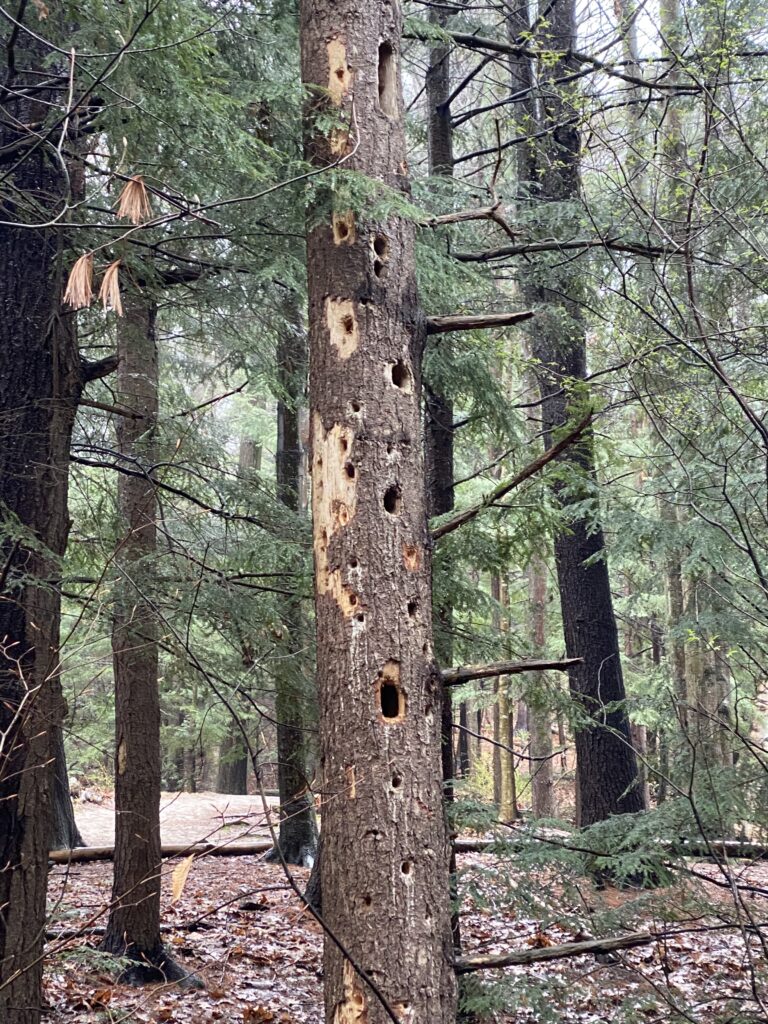
Pictured above are hollows produced by several species of woodpecker. The rectangular and relatively large holes were likely created by a Pileated Woodpecker. The Pileated Woodpecker creates these signature holes primarily to consume carpenter ants, also using them for nesting sites. The cavities left by the Pileated Woodpecker often attract other bird species. I hypothesize that the smaller holes on the hemlock were left by Red-bellied Woodpeckers, whose excavations are typically no more than 1-2 inches wide.
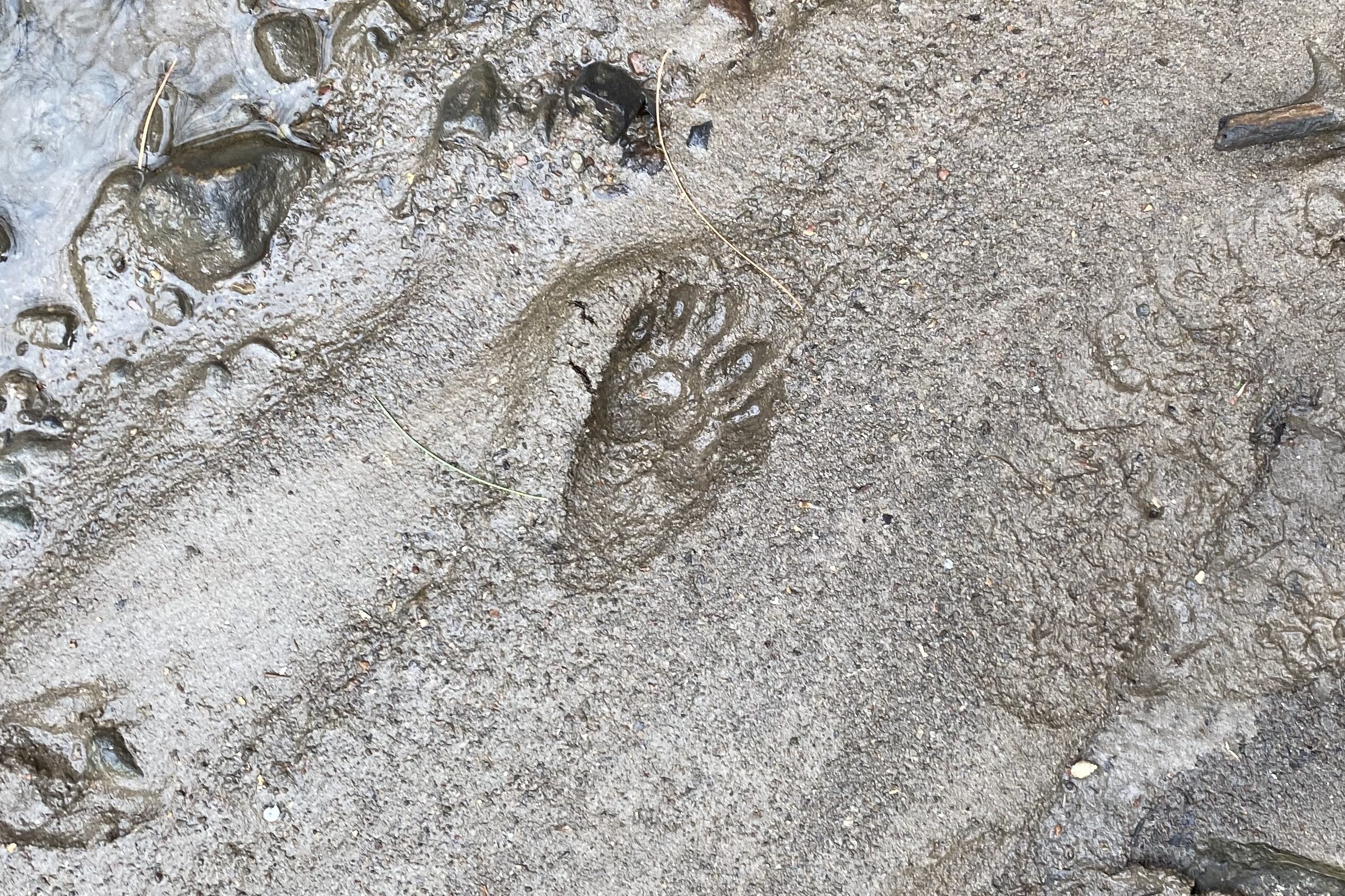
While walking alongside the stream, I spotted a set of raccoon tracks in the mud. Raccoons have 5 human-like fingers and move in a meandering pattern. Raccoons mate throughout the winter, reaching peak activity in February and giving birth 6 months after gestation.
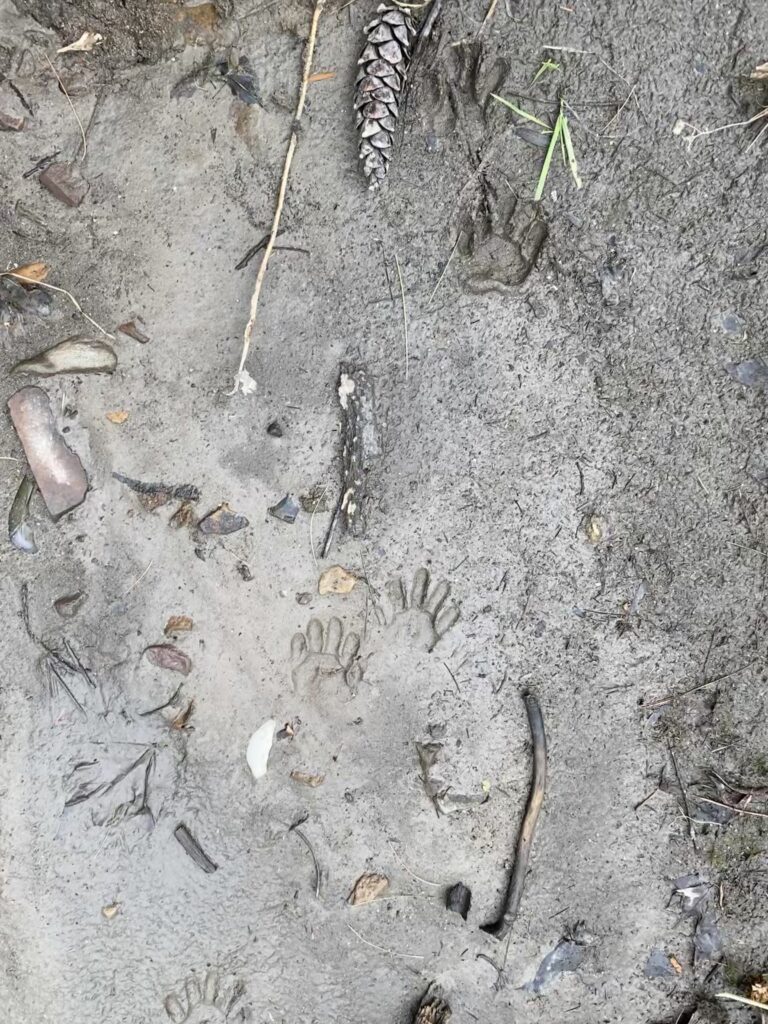
Close by were the tracks of a kit (baby raccoon). The timing of when I found these tracks (early April) corresponds with the breeding and gestation timeline described above. Female raccoons have between one and seven kits that remain with their mothers for 10 to 12 weeks. The claws of this baby raccoon have not yet developed.
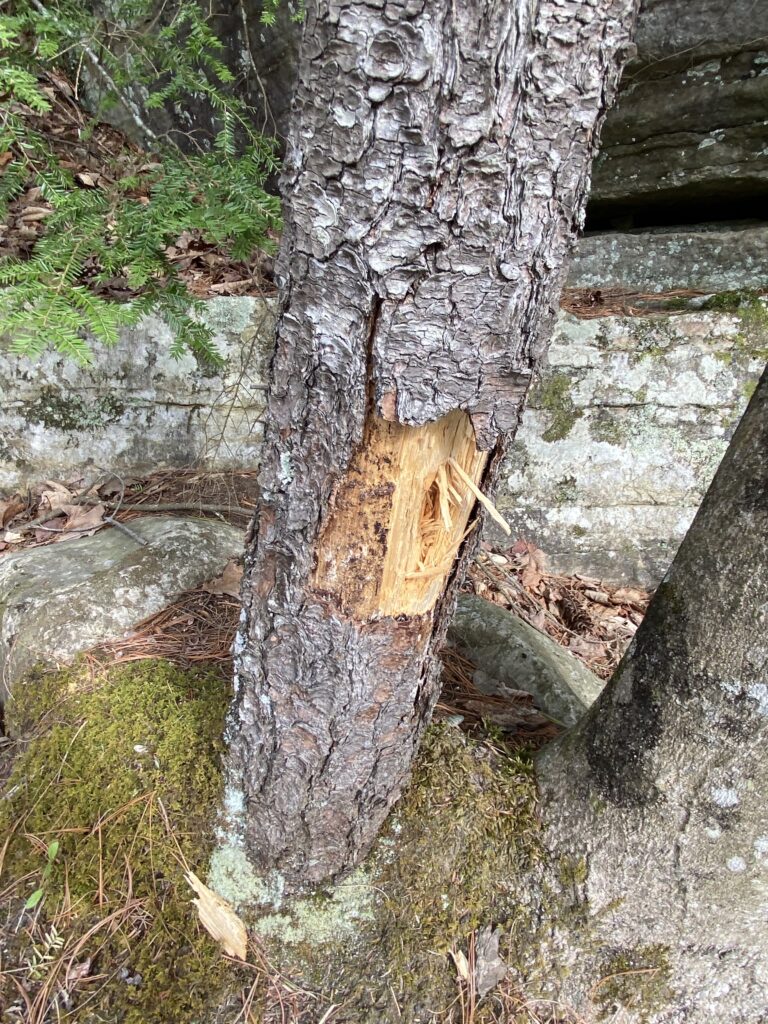
The shape of the tree wound and the height from the ground indicates that this tree was a beaver’s meal. Beavers are unable to climb trees and range from 2.4-3 feet long. The damage was about two and a half feet off the ground.
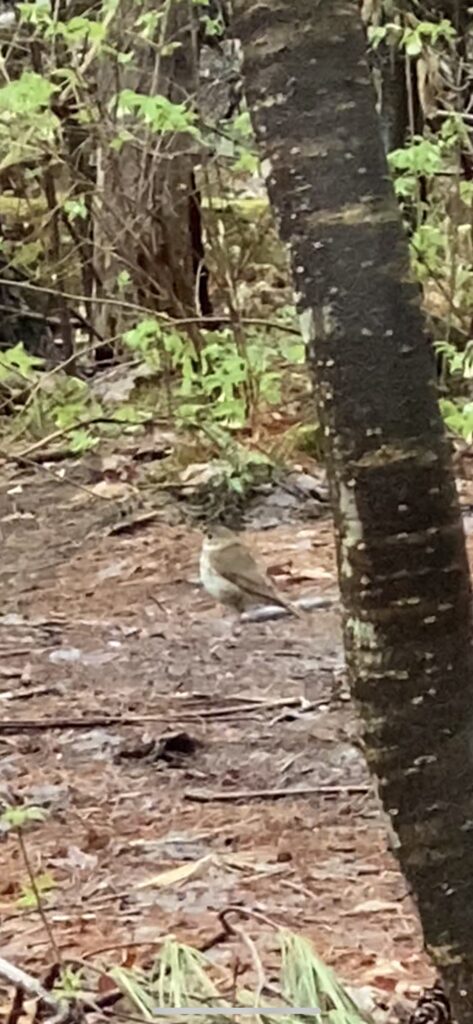
Veeries are migratory birds that are part of the thrush family. They winter in South America and return to the North in early Spring. I spotted this cinnamon brown bird on the way back from my phenology spot. The veery maintained its distance by hopping away as I approached.
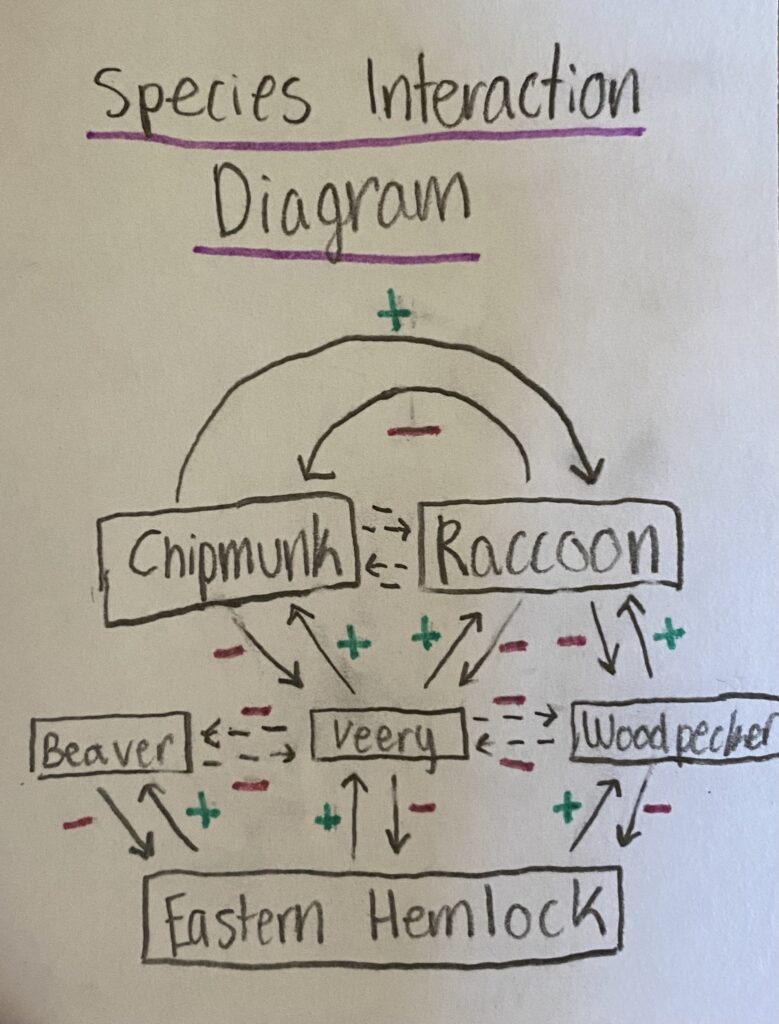
Works Cited
Dowd, B. (2021, January 15). Understanding raccoon behaviour during fall and winter. Retrieved April 18, 2021, from https://www.skedaddlewildlife.com/blog/raccoon-behaviour-winter-months/
Holland, M., & Kaneko, C. (2019). Naturally curious: A photographic field guide and month-by-month journey through the fields, woods, and marshes of New England. North Pomfret, Vermont.: Trafalgar Square Books.
Red Maple (Acer RUBRUM) fact sheet – signs of the Seasons: A New England Phenology program – University of Maine cooperative extension. (n.d.). Retrieved April 18, 2021, from https://extension.umaine.edu/signs-of-the-seasons/indicator-species/red-maple-fact-sheet/
Rosemary. (2021, March 22). Who made that hole? Retrieved April 18, 2021, from https://blogs.massaudubon.org/yourgreatoutdoors/who-made-that-hole/
